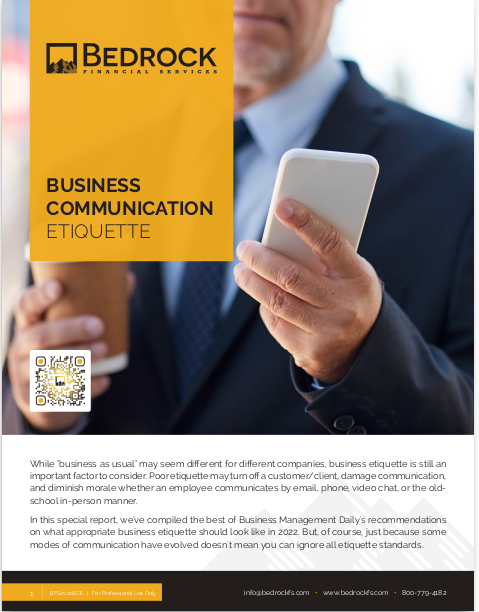Key Takeaways
-
Subject lines and timing still determine whether your emails get opened or ignored in 2025. Treat them like headlines and launch windows, not afterthoughts.
-
As a financial professional, building credibility over email requires a long game: consistent delivery, value-first messaging, and segmented communication based on client needs.
The Myth of a “Dying” Email Channel
You’ve probably heard it before: “Email marketing is dead.” That statement circulates every few years, often spouted by those eager to promote newer channels. But the truth in 2025 is this: email marketing isn’t dead—it’s suffering from malnutrition. Poor subject lines, bad timing, and irrelevant content have drained its effectiveness.
When used strategically, email remains one of the most powerful and cost-effective tools in your outreach arsenal. It reaches clients where they already are: their inbox. But to get their attention, you need to rethink your approach.
Why Most Financial Emails Go Unread
Inboxes are crowded. Your clients receive promotional messages from dozens of brands daily. The average open rate for financial services emails in 2025 sits between 18% and 25%, depending on the segment. That means three out of four emails don’t get opened.
Here’s what’s often to blame:
-
Subject lines that sound generic or overly formal
-
Emails sent at the wrong time of day or week
-
Lack of segmentation—everyone receives the same message
-
Long-winded intros with little client-centered value
If you’re still blasting the same newsletter to your entire list on Monday at 9 AM, you’re not using email marketing—you’re using email broadcasting. And there’s a difference.
What Actually Gets Emails Opened in 2025
The formula for better open rates isn’t a secret—it’s precision. That means:
-
Compelling Subject Lines: Keep it under 50 characters. Use curiosity, relevance, or urgency.
-
Sender Consistency: Use a recognizable name (your own) instead of a brand or department.
-
Timing Optimization: Test different times. For financial emails, Tuesday through Thursday around 10 AM or 2 PM still performs best in 2025.
-
Preheader Text: This is your second chance. Make it support or extend the subject line.
Your subject line is your first impression, and it has a very short window—typically under 3 seconds—to spark interest. Don’t waste it on “Monthly Newsletter” or “Financial Update.”
Smarter Segmentation Starts With Listening
Your clients aren’t one-size-fits-all. A newly married couple doesn’t need the same retirement advice as a nearing-65 professional thinking about Medicare and Social Security. Segmenting based on life stage, financial goals, or engagement level changes everything.
Common segmentation strategies for financial professionals:
-
Age brackets: under 40, 40–55, 55+
-
Retirement status: pre-retiree, retiree
-
Financial goals: debt management, investment growth, income planning
-
Account type or product interest: TSP, IRA, annuities, health planning
The key is using behavior-based data when possible. Did they click a link in your last email about Roth conversions? They’re signaling interest—respond accordingly.
Timing Is Strategy, Not Habit
Many financial professionals fall into a rhythm of sending emails at the same time every week. Consistency is good, but strategy is better.
Here’s what smarter timing looks like in 2025:
-
Welcome emails: Sent immediately after signup (open rates exceed 60%).
-
Follow-up sequences: Dripped over 3–5 days after a consultation.
-
Quarterly updates: Timed to fiscal cycles or investment review periods.
-
Life-stage reminders: Age 50 for catch-up contributions, 59½ for penalty-free withdrawals, 65 for Medicare enrollment.
Leverage automated workflows, but avoid sounding robotic. Personalization tokens and contextual timing increase relevance.
Design That Doesn’t Get in the Way
Financial professionals don’t need flashy email design. You need clarity, simplicity, and credibility.
Email design tips for 2025:
-
Stick to mobile-responsive layouts. Over 70% of financial emails are read on mobile.
-
Use short paragraphs and ample white space.
-
Limit CTAs (calls to action) to one per email when possible.
-
Add a professional headshot or signature block to build trust.
-
Avoid large image-only emails—they trigger spam filters and render poorly.
A good email looks like a note from you, not a brochure from a bank.
What to Say (And What Not to)
Tone matters. If your email sounds like a compliance memo or an infomercial, your reader tunes out. Your tone should balance authority with warmth.
Here’s what works:
-
Client-first language: “Here’s what this means for you” instead of “Our firm offers…”
-
Value without strings: Share tax deadlines or RMD tips without pushing a product.
-
Personalization: “Hi [First Name], based on your interest in…”
Avoid:
-
Jargon-heavy phrasing
-
All-caps urgency (“ACT NOW”)
-
Burying the lead—get to the point fast
Your clients don’t expect you to entertain them. But they do expect you to respect their time and intelligence.
Automations That Feel Human
You can’t write every email manually—and you don’t need to. But automation needs a human touch.
Examples of automation with a personal edge:
-
A 5-email onboarding sequence for new clients explaining what to expect
-
Birthday or half-birthday check-ins that include a meaningful question
-
Year-end planning reminders with links to book a 20-minute review
Set these up once, monitor their performance monthly, and refine based on open and click-through data. Your CRM should support this. If it doesn’t, it’s time to rethink your tech stack.
Metrics That Actually Matter in 2025
The basics still count—open rates, click-through rates, unsubscribe rates. But 2025 asks more of your email metrics:
-
Engagement over time: Who’s stopped opening your emails in the last 90 days?
-
Reply rate: Who’s writing back or clicking to schedule?
-
Conversion triggers: Which topics, timelines, or subject lines correlate with actual appointments or policy actions?
If you’re not using this data, you’re guessing. Use A/B testing on subject lines monthly. Review engagement quarterly. Retire dead email segments annually.
Compliance and Deliverability Go Hand-in-Hand
Regulations aren’t going anywhere. And in 2025, inbox providers are even stricter about sender reputation. That means:
-
Always get consent before emailing (double opt-in is safest)
-
Include a visible unsubscribe link in every message
-
Authenticate your domain with DKIM, SPF, and DMARC records
Bad deliverability means even great emails never arrive. Make sure your sender score stays healthy.
Rebuilding Email Trust Takes Time
If your open rates are below 15% or your unsubscribe rate keeps creeping up, you may be in email recovery mode. Rebuilding trust is possible, but it’s a marathon, not a sprint.
Steps to take:
-
Purge inactive subscribers from the last 6–12 months
-
Re-engage warm leads with a “Do you still want this?” message
-
Reduce frequency to build anticipation and improve relevance
If email has become white noise to your clients, you can’t fix it with louder messaging. You fix it by saying something worth hearing, at the right time, to the right person.
Email Still Belongs in Your Marketing Core
Social media trends come and go. Text message marketing requires more consent. Direct mail is costly. But email? It’s the one channel that remains direct, data-driven, and owned by you.
As a financial professional in 2025, your email strategy doesn’t need to be complex. It needs to be intentional.
-
Lead with value, not volume.
-
Write like a person, not a brand.
-
Test, track, and evolve.
You’re not sending emails to a “list.” You’re reaching individuals with goals, fears, and decisions to make. Speak to that, and email marketing will never die on you.
Let Email Work Harder for You—With the Right Help
If you’re ready to stop wasting emails and start building real relationships through your inbox, Bedrock Financial Services is built to support you.
We help professionals like you:
-
Automate smarter, not just faster
-
Improve CRM targeting and segmentation
-
Craft messaging sequences that convert
-
Stay compliant without sacrificing voice
Sign up today and let’s make every email you send worth reading.







